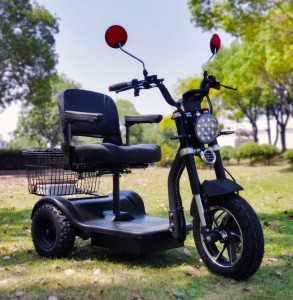Scooters have become an important means of transportation for people with mobility impairments. These scooters are powered by electric motors, allowing users to move easily and independently. However, like any other mechanical device, scooter motors can experience problems over time. Regularly testing the performance of the motor can help detect problems early and ensure smooth and safe driving for users. In this blog post, we’ll give you a comprehensive guide on how to test a mobility scooter motor.
Understand the basic functions of a mobility scooter motor:
Before we delve into the testing aspect, it’s crucial to have a basic understanding of how a mobility scooter motor works. These motors are usually direct current (DC) motors that drive the scooter wheels. The motor receives electricity from the scooter’s battery pack and converts it into mechanical energy, propelling the scooter forward or backward.
Importance of regular motor testing:
Regularly testing the performance of your motor is crucial for a number of reasons. It helps detect potential problems before they worsen, prevents sudden malfunctions while using the scooter, and ensures user safety. Additionally, testing a motor can help evaluate its efficiency and diagnose any potential mechanical or electrical issues.
Motor test procedure:
1. Power off the scooter: Before performing any tests, turn off the scooter and remove the key from the ignition. This ensures your safety and prevents any accidental movement during the test.
2. Visual inspection: Carefully inspect the motor for any obvious signs of damage, loose connections, or worn parts. Look for frayed wires, loose bolts, or any debris that could impede the motor’s functionality. Before continuing with testing, make sure to resolve any obvious issues.
3. Battery voltage check: Use a multimeter set to the direct current (DC) voltage function and measure the voltage between the battery terminals. Make sure the battery is fully charged before performing the test. A voltage reading significantly lower than the manufacturer’s recommended voltage indicates a potential problem with the battery.
4. Resistance test: With the motor disconnected from the battery, use the ohm function of the multimeter to measure the resistance between the motor terminals. Compare this reading to the manufacturer’s specifications. Significantly higher or lower resistance readings may indicate faulty motor windings or damaged internal components.
5. Load test: Reconnect the motor to the battery and test the performance of the scooter under load. This can be done in a controlled environment, such as an open space or a secure testing area. Observe the scooter’s acceleration, maximum speed, and overall performance. Any unusual behavior, such as jerky movements, grinding sounds, or sudden loss of power, may indicate a problem with the motor.
Regular testing of a mobility scooter motor is essential to maintain its performance and ensure user safety. By following the step-by-step guide above, you can effectively evaluate your motor’s functionality and identify any potential issues. Remember, if you encounter any problems during testing or suspect the motor is faulty, seek professional help from a qualified technician. Regular maintenance and testing will not only extend the life of your mobility scooter, but also provide you with reliable transportation for years to come.
Post time: Nov-08-2023



